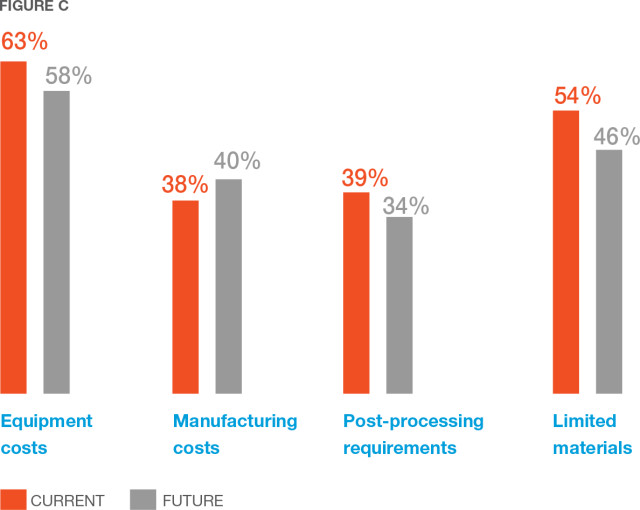
At the conclusion of the recent opening of their facility to the media, Joe Allison, CEO of Stratasys Direct Manufacturing introduced SMS Research Advisors.
SMS prepared the results of an independent survey conducted with a cross section of engineers about the future of industrial additive manufacturing.
“We set out to uncover the common themes among companies who are on the spectrum of larger-scale adoption and integration of 3D printing into their manufacturing process,” Allison said. “We’re sharing our findings to help advance adoption and help manufacturers’ maximize the business benefits.
“We’ve already changed the way that prototypes are made, but now we are changing the way manufacturing is done. We needed to look beyond our factory walls to get a more complete sense of where 3D printing is headed, so we turned to those who live and breathe the technology just like we do – professional users.”
The report set out to answer the following questions:
- How will companies use 3D printing over the next 3 years?
- What do they see as the obstacles 3D printing adoption?
- What is the business value?
- How will product development evolve?
- Who will invest in owning the technology?
- What role will the service provider play?
Research findings:
The survey was sent out to 40,000 designers, engineers and executives. Of the 700 who completed the survey, 40 percent reported to work at companies that take in over $50 million in annual revenue.
The number one benefit that the companies were surveyed for is the ability to fabricate objects with extreme design complexities. The number 1 inhibition to adopting industrial additive manufacturing (AM) are the equipment costs.
Respondents were asked what they perceive as the top challenges their company faces in using AM now and in the future. The four most common responses are shown in this graph.
Respondents were asked what they perceive as the top challenges their company faces in using AM now and in the future. The four most common responses are shown in this graph.
Responses were broken down between those who already use industrial AM and those who are considering it.
The primary concern of those participants who were already using industrial AM was how to leverage the technology to increase their design capabilities. Those who were considering AM, but hadn’t yet adopted it were 20 percent more likely to believe that a lack of understanding of the capabilities of AM is the primary reason their company stayed away from it all together.
These companies wouldn’t even use a 3D printing service provider, highlighting a need for education about industrial AM and the value it can bring to a business.
The most common obstacles to adoption of industrial AM are the prohibitive cost of equipment and the inability of industrial AM processes to yield objects with specific mechanical properties.
The survey also showed that the consumer and energy industries are most likely to grow in terms of using 3D printing services and outsourcing industrial AM to others. The aerospace and medical industries are the most likely to grow in-house AM. No big surprises there.
Read more at ENGINEERING.com

